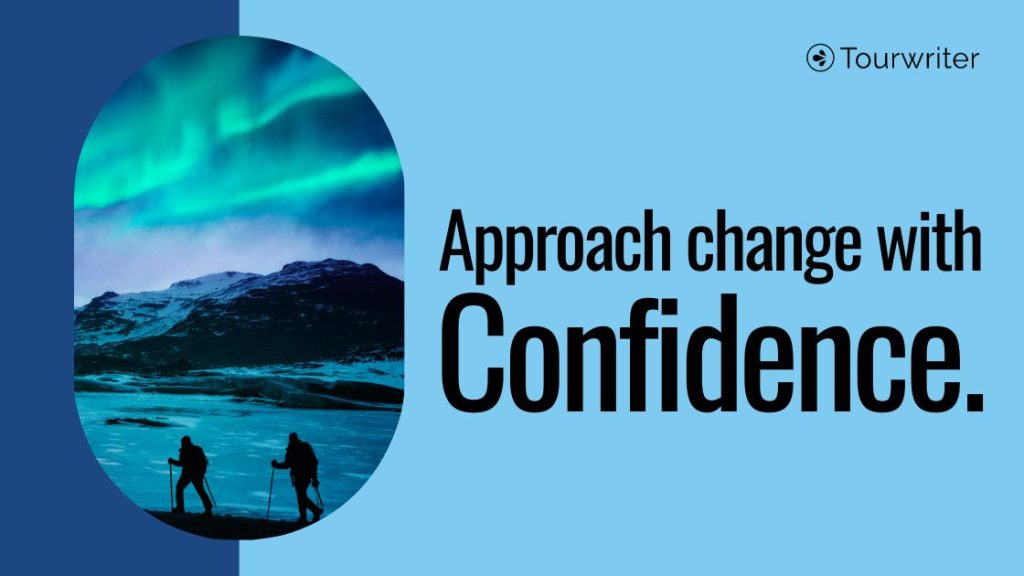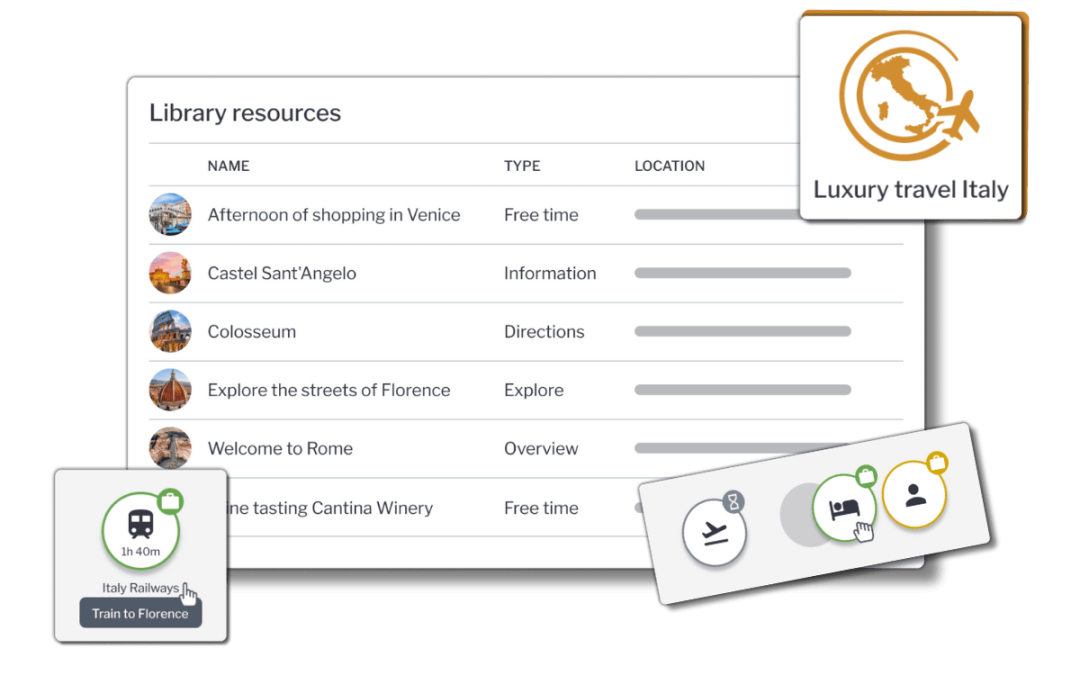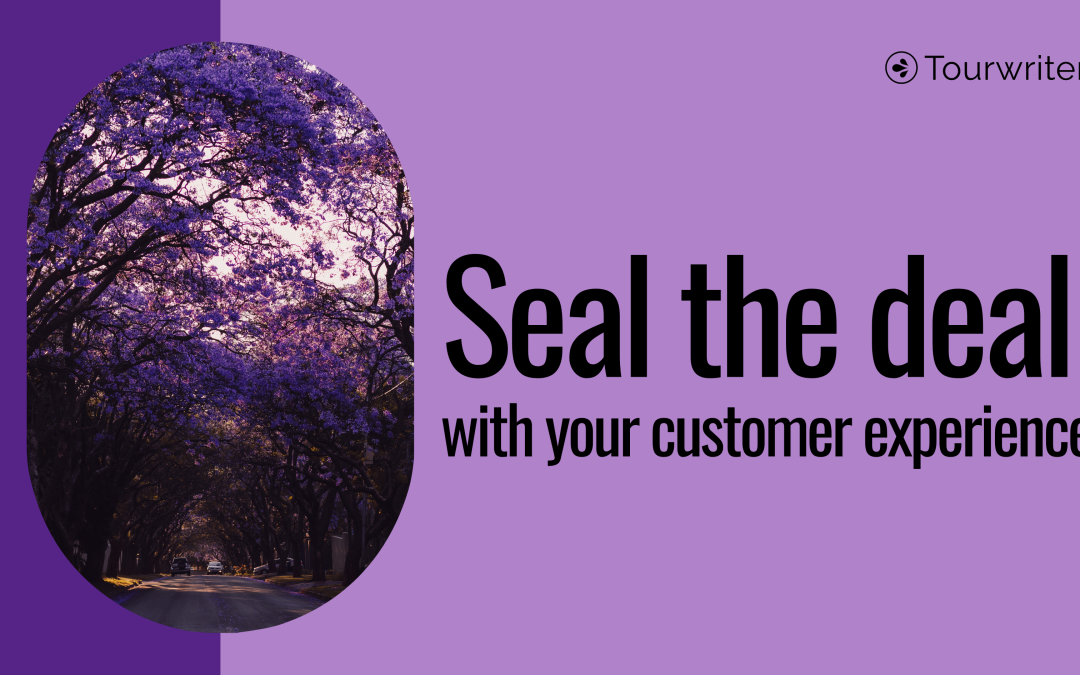Set your team up for success when introducing new software.

Making changes to your business processes is hard. Amid the demands of day-to-day operations, the prospect of disrupting your flow can be daunting and unsettling. However, change has the potential to yield transformative outcomes for your company’s productivity and profitability, especially when implementing time-saving software.
As a tour operator software provider, we know how important it is to make sure your software implementation is successful at every stage. In this blog, we explore the importance of change management, how to get buy-in from your travel designers, and what you need to consider along the way.
What is change management and why is it important?
Change management is a structured way to help you and your team smoothly switch to new software. It’s like having a roadmap that guides you through the process of getting used to the new tool. Effective change management minimises confusion and resistance, enhances adaptability, and ensures the success of the transition. As a tour operator, there are three groups of stakeholders that you need to consider along the way:
- Management: Assemble a strong team that shares a common vision, and is responsible for overseeing the software adoption process. They should provide strategic direction, allocate necessary resources, and ensure that the change aligns with the company’s objectives.
- Your travel designers: Your designers are at the forefront of using the new software. Involve them from the beginning to understand their needs, gather their input, and provide tailored training. This inclusion fosters ownership and enthusiasm, making them more inclined to embrace and effectively utilise the software.
- Your travellers: Often overlooked but equally vital, your travellers’ experience should be considered. Ensure the chosen software enhances the overall travel experience for your customers. Accessibility, user-friendliness, and features that resonate with your travellers’ preferences are crucial to ensuring their satisfaction and repeat business.
The ADKAR change management model is a framework that provides a structured approach to addressing the emotional and practical aspects of change. We like it for its simplicity and applicability to different business models. You don’t need to be a change management expert to utilise it, and importantly, it has its foundation in robust research, with lots of case studies to draw from.
Utilising the ADKAR framework, here’s some guidance for smoothly implementing software like Tourwriter to your business.

Awareness – of the need to change
The first question that you need to ask is: “why are we making this change?” All too often, we make changes for the sake of making changes, rather than identifying the problems that the change will solve. Ensuring that your new software aligns effectively with your business needs, is the key to a successful and sustainable process.
Identify existing challenges or inefficiencies that you are encountering in your business.
- Is the itinerary proposal process taking too long, sapping your team’s productivity?
- Is your conversion rate teetering below expectations?
- Have you had feedback from customers about the accessibility of their travel information?
These types of questions will steer you in the right direction to help you identify what software you need to confidently tackle these issues head-on.
Next, ensure clear communication with your team. It’s crucial that everyone is transparently aware of what is needed, and understands how the software change will effectively address these challenges.
Desire – to support the change
This is where emotion and attitudes come into it: addressing the “what’s in it for me?” question. Creating a compelling case for the new software might involve highlighting how it will make your team members’ work easier and more efficient. People who are enthusiastic about change are much more likely to buy-in and embrace it. Here are a few strategies to do this:
- Involve your team in the decision process. Offering opportunities for input, suggestions, and feedback on the software selection not only empowers your team members, but allows you access to their valuable expertise. In effect, treating your team members as experts of their own work fosters trust, and can contribute to a sense of ownership and agency as they become active contributors to the decision.
- Showcase success stories. Share real-life examples of how similar software implementations have led to improvements in other businesses. This will provide tangible evidence of the software’s benefits, and generate excitement about the potential positive changes in your own travel design business.
- Highlight personal growth opportunities. Emphasise how mastering the new technology can be a valuable addition to their skillset, potentially opening doors to future opportunities.
- Appease any worries. Holding a Q&A session will give your team the opportunity to ask questions and learn more about the software that you will be implementing. A good tour operator software provider should be on hand to join this, if you feel it’s right for your team.

Knowledge – on how to change
This aspect of the change management journey involves understanding and communicating what is going to change, and how it will all work. In essence, you need an implementation plan. Develop a clear timeline outlining the stages of implementation, and any key milestones.
This is going to look different for every company, but below are some questions you might consider to start this process:
- How will the software fit into existing workflows?
- What changes need to be made to normal processes in order to incorporate the new tool effectively?
- Are there any obstacles that might arise? What will need to be done to avoid/overcome these?
- Who will be affected?
- What resources will be required (such as time & budget) for successful implementation?
- If applicable, how will data be migrated from the existing systems to the new software?
- What testing processes will be undertaken to ensure that the software functions as intended?
- What metrics will you use to assess the success of the software implementation?
Remember, the software company wants you to be set-up for success. They should have an implementation plan or onboarding process already prepared for new customers. In most cases they will help guide you through as you implement the changes; Ask questions and use their expertise in their product to your advantage.
Ability – to implement skills and behaviours
Provide your team members with the necessary information and training to effectively use the new software, and crucially, put their knowledge into practice. This is relatively straightforward and involves utilising user manuals, video tutorials, and FAQs. Ensure there are support resources available, and that team members know where they need to go for assistance when they encounter questions or challenges.
Knowledge empowers people to confidently navigate and utilise new software, reducing uncertainty and boosting confidence. In turn, confidence correlates with positive attitudes about the software, and long-term commitment to its use.

Reinforcement – to sustain the change
Test, iterate and test again. Travel design is no small feat, and with big software changes, it might not be quite right the first time — but that’s okay! Test the new tool, gather feedback and use it to make improvements. Getting it right will ensure that the new software lasts the test of time. Similarly, monitor the performance of the software and measure its impact on your business metrics. If there are problems, get in touch with the software provider. Chances are they will want to help you feel confident and satisfied with your change.
On a more personal note, celebrate successes, recognise the efforts of your team and provide ongoing support. Commending your team on their work will further bolster their commitment to the new software, and keeping up a transparent flow of information regarding software updates and improvements will ensure they continue to have the tools they need to succeed.
Conclusion
The journey towards implementing new tour operator software might seem challenging, yet the net gain in productivity, efficiency and traveller satisfaction will undoubtedly position your travel design company for a brighter future. Embracing these change management principles to guide you, will set your business up for success. Here’s to a journey of efficiency and innovation ahead.




